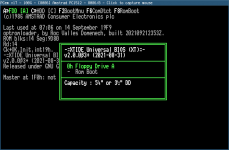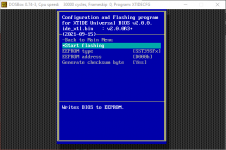I would recommend trying again with the 4x copy of the 8k version, but load/save it in xtidecfg first to write the checksum byte
As my last EPROM was a bad chip, in order to be able to advance in the meantime, I decided to just load the optrom from a floppy.
I didn't like the tools I found for the purpose, they seemed to be a lot of work to get working, so I ended up writing my own instead.
Last edited:



